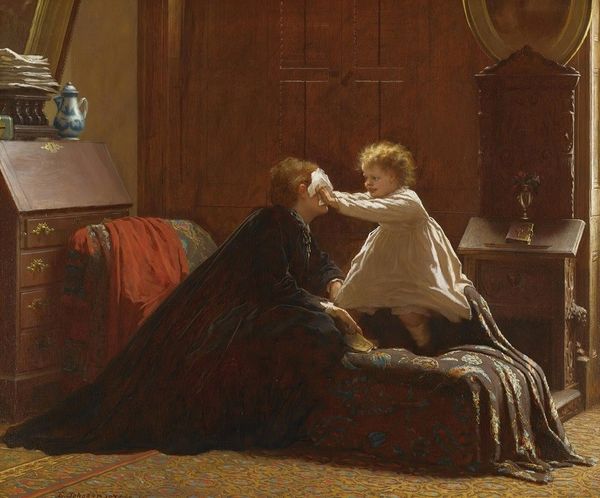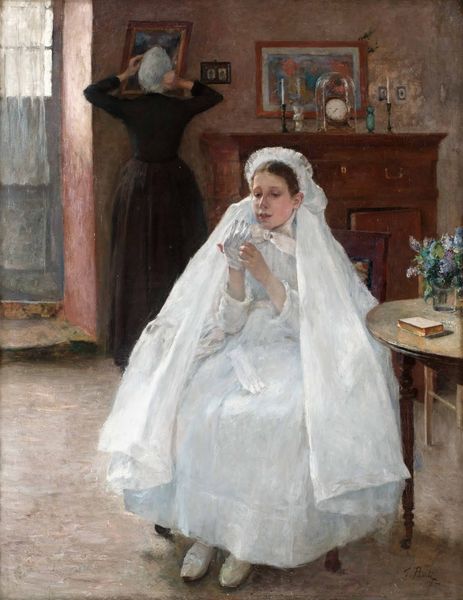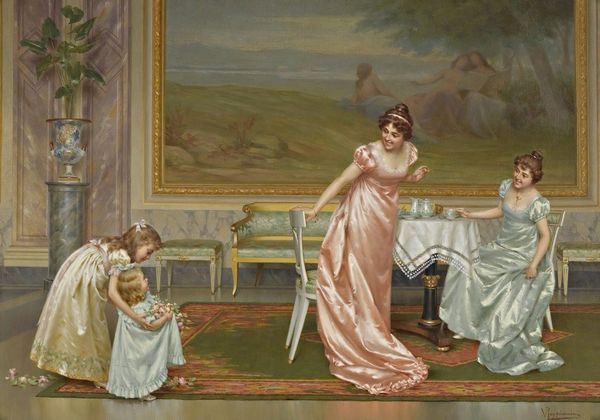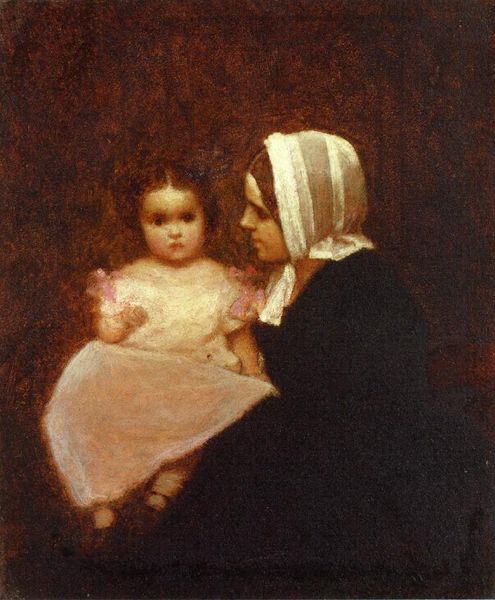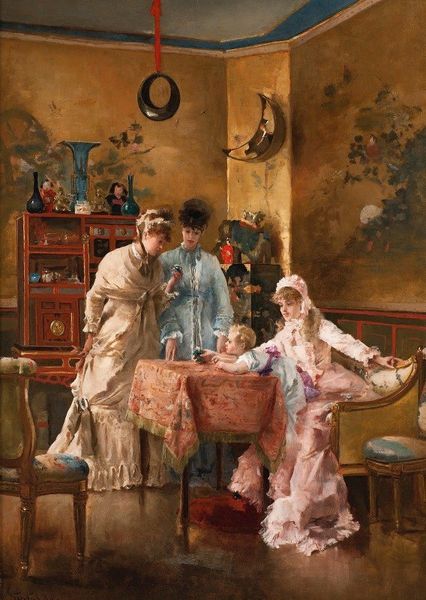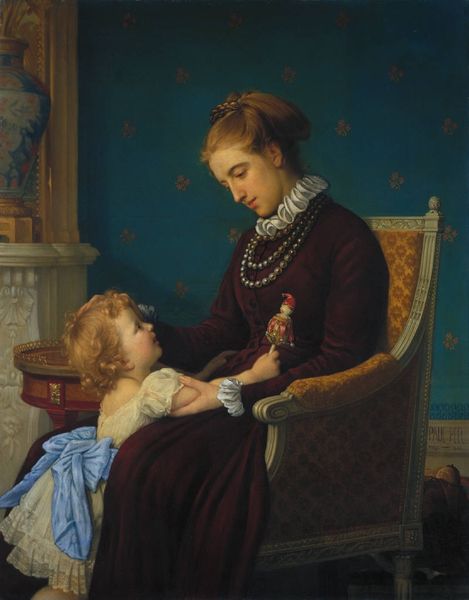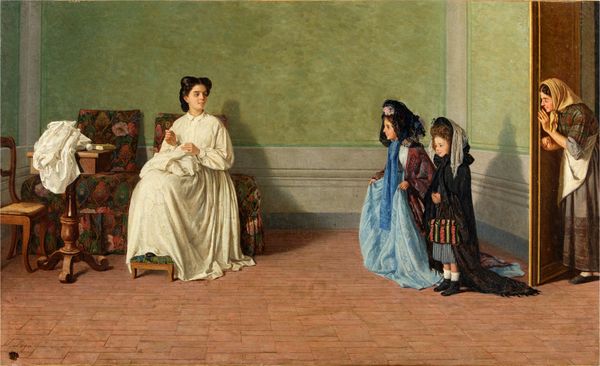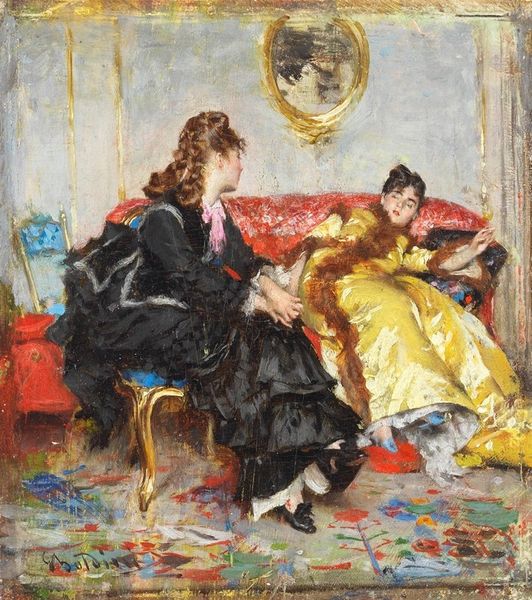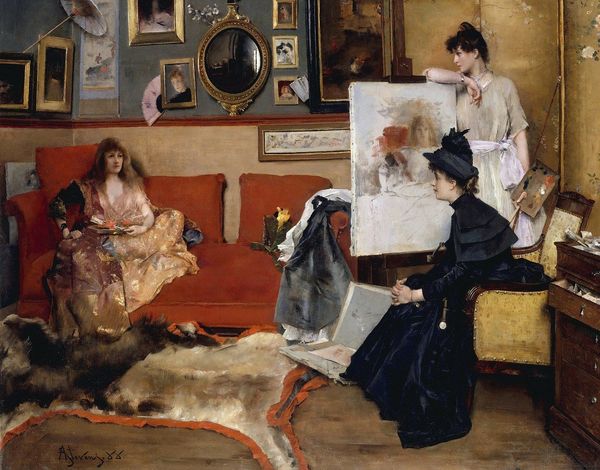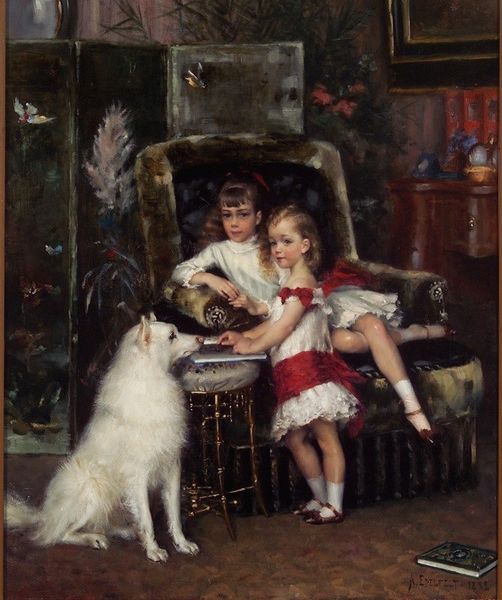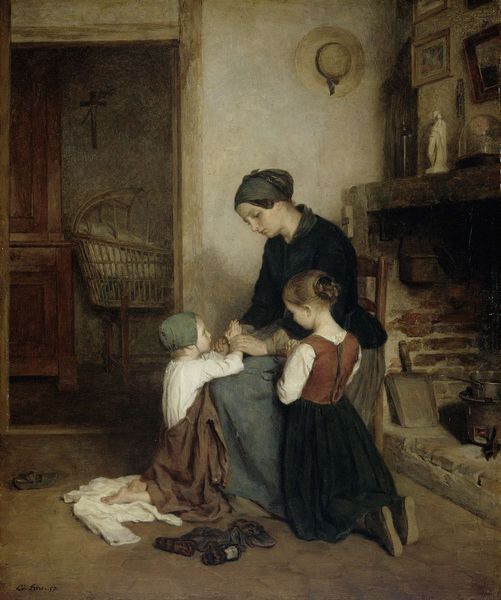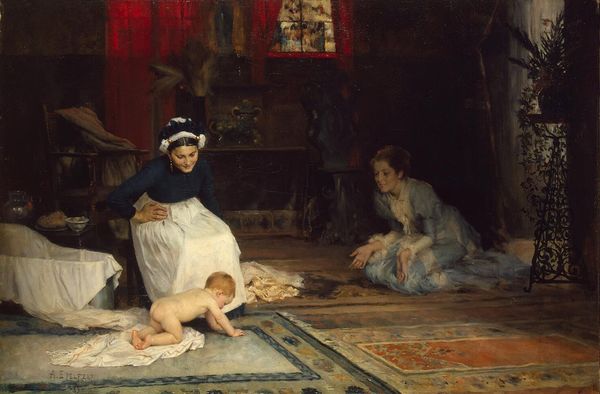
painting, oil-paint
#
portrait
#
painting
#
impressionism
#
oil-paint
#
intimism
#
genre-painting
Dimensions: 73.66 x 104.14 cm
Copyright: Public domain
Curator: William Merritt Chase painted this charming scene in 1889; its title is “I am Going to See Grandma,” also known as "Mrs. Chase and Child." Editor: What strikes me immediately is the texture—you can almost feel the softness of the light on their dresses and the rug. The way the oil paint is worked, particularly in the rendering of fabric, really grabs your attention. Curator: Absolutely, there's an interesting narrative element too. The figures are posed in a way that conveys anticipation. Note how the toy sheep on wheels anticipates movement and a future adventure for the child, setting an expectation. Editor: That sheep also gives you a great sense of the materiality available in the late 19th century. Look closely, it’s made of what appears to be cheap yarn—a children’s toy crafted to look valuable while obviously manufactured without artistry. The difference between that and Mrs. Chase’s jewelry is a sharp contrast! Curator: Indeed. Chase was really capturing a slice of upper-middle-class life in that period, full of both luxury and mass-produced sentimentality. And think of the emotional significance of the 'grandmother' figure - connecting the present moment to traditions and familial memory. She represents both safety and generational link. Editor: It’s true, even though the destination of the ‘grandma’ remains ambiguous, it serves as a social marker. But that also strikes me about this painting - it shows labor very indirectly. How many unseen people were involved in making Mrs. Chase’s dress or this scene accessible through mass-produced rugs? Curator: An interesting point! And let's look at the artist's gaze too, in relation to what the painting communicates; the symbols are indicators of social and emotional realities within the domestic sphere. The painting suggests not just going somewhere, but of 'becoming', an allegory to transition in childhood and family lineage. Editor: Seeing this reminds me how important it is to look at the physical objects in any painting: understanding them shows us a history not always reflected in high-minded discussions of 'beauty' or 'symbols.’ It’s about labor and distribution. Curator: It certainly adds to the layers. This exploration enriches how we appreciate the artwork beyond surface level aesthetic, bridging from the sensory details of everyday things towards understanding wider cultural codes embedded within a painting, opening portals for more nuanced understanding. Editor: Agreed. I'm leaving with a greater appreciation for how materials and objects shape—and are shaped by—the world around them, as well as what we can gain when these material realities meet the more 'humanistic' concerns.
Comments
No comments
Be the first to comment and join the conversation on the ultimate creative platform.
